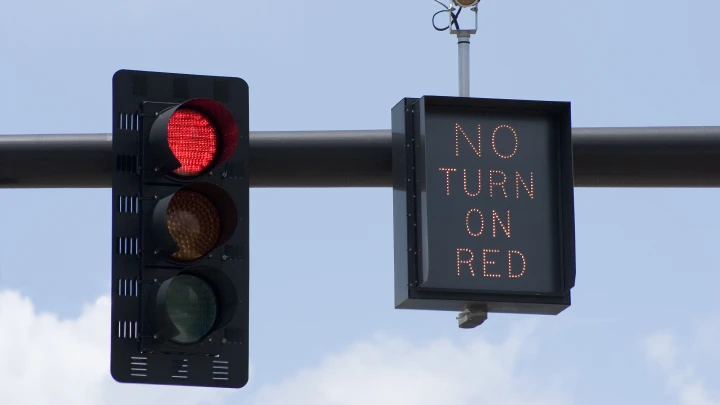Traffic lights are an essential component of driving since they maintain traffic flow and maintain order on our roadways. However, tucked away within the red, yellow, and green signals is a law known as the right turn on red (RTOR) rule that occasionally causes confusion. Like many other states, Kansas allows RTOR, but there are rules in place to protect motorists, pedestrians, and bicyclists. This blog post explores the nuances of the Kansas RTOR regulation in 2024 and offers a thorough how-to for confidently negotiating intersections.
Context: The History of RTOR in Kansas
Most U.S. states, including Kansas, have historically permitted RTOR maneuvers. The purpose of this technique is to enhance traffic flow, especially when there is less congestion. But discussions about the safety of cyclists and pedestrians have continued.
The Current Kansas RTOR Law
Kansas will follow the Right-of-Way on Red (RTOR) Act as of April 30, 2024. According to this rule, a car approaching a red light may only turn right after completely stopping and making sure that the following conditions are met:
Making a Safe Right Turn on Red in Kansas
Here’s how to carry off a safe RTOR maneuver in Kansas step-by-step:
- Approach the Intersection with Caution: As you approach a red light, slow down gradually and prepare for a complete stop. Be mindful of the posted speed limit and adjust your speed accordingly.
- Complete Stop: Come to a full and complete stop before the designated stop line or crosswalk. Avoid the temptation to inch forward or treat the red light as a rolling stop.
- Check for Oncoming Traffic: Once stopped, carefully examine the intersection in all directions. Look for oncoming vehicles turning left, those proceeding straight through the green light, and any motorcycles or bicycles that may be present.
- Yield to Pedestrians: Pay close attention to pedestrians crossing the street within the marked crosswalk. Even if the pedestrian signal displays a red light or a don t walk sign, you must yield the right-of-way until they have completely crossed the intersection.
- Turn Only When Safe: If the intersection is clear of oncoming traffic and pedestrians, proceed with caution to make your right turn. Be mindful of blind spots and anticipate potential hazards.
Examples of When NOT to Turn Right on Red in Kansas
In Kansas, there are some circumstances in which it is not legal to turn right on red. Here are a few noteworthy instances:
Safety Tips for RTOR in Kansas
In Kansas, you should take into account the following extra safety precautions before turning right on a red light:
Conclusion
When appropriately implemented, the Kansas RTOR law can improve traffic flow without sacrificing safety. We can all help to make Kansas’s roads safer and more effective by being aware of the law, using safe driving practices, and putting the welfare of bicyclists, pedestrians, and other drivers first. Recall that driving responsibly is a shared duty and that knowledge is power.





























